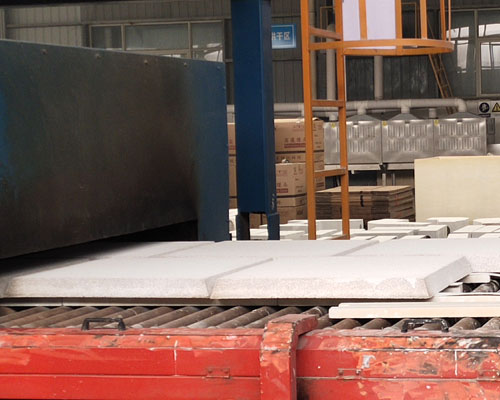An aqueous ceramic slurry of ceramic foam filters is prepared, and the foam is impregnated with the foam material to coat the mesh with it and basically fill the voids with it. Then compress the impregnated material by squeezing through preset rollers, so that about 80% of the slurry is preferably discharged, and the balance is evenly distributed throughout the foam material, so that some holes are evenly distributed to be blocked to increase Tortuosity. The coated foam material is then dried and heated, the flexible organic foam is first burned, and then the ceramic coating is sintered, thereby providing a molten ceramic foam with a plurality of interconnected voids surrounded by a bonded or molten ceramic mesh, and It is foamy.
The aqueous ceramic slurry used naturally depends on the required ceramic material of the selected metal to be filtered. One must have sufficient performance in the final product to withstand the erosion of a specific molten metal and withstand the specific high temperature conditions used. In addition, the slurry should have high fluidity, and an aqueous suspension containing ceramics should be used for the filter. Preferably, a mixture of aluminum oxide and chromium oxide is used. However, these materials can be used alone or in combination with other ceramic materials.
In addition, other typical ceramic foam filters material that can be used include zirconia, magnesia, titanium dioxide, silicon dioxide and mixtures thereof. Typically, the slurry contains about 10 to 40% water and one or more rheological agents, binders, or air setting agents. It has been found that bentonite is a particularly preferred additive. Bentonite is a naturally occurring clay, mainly composed of aluminum and silicate, and usually contains some magnesium and iron. Of course, a chemical equivalent or a composition similar to the material can be used. The main function of the bentonite component is rheology. The slurry produced by the bentonite component has the required thixotropy, that is, it has flow resistance at low shear rates and has satisfactory fluidity at high shear rates.
In addition, the bentonite component provides a small setting or bonding function, and produces yield strength when firing the final product to produce some glass phase. In addition, an air setting agent that does not substantially react to molten metal, such as aluminum orthophosphate, magnesium orthoborate, or aluminum hydroxy chloride, should be used.

In addition, a small amount of kaolin can be used as an additional binder material and rheological agent, which provides additional strength in the final product and functions similarly to bentonite. Kaolin is a clay mainly composed of alumina and silica. Of course, a chemical equivalent or a composition similar to the material can be used.
As described above, the ceramic slurry is an aqueous slurry that contains a certain amount of water to help control the viscosity, so that the foam can be impregnated with the slurry, and the slurry can also be used conveniently.
In the ceramic foam filters material preparation method, an open-cell polyurethane foam plate with appropriate pore size is immersed in the ceramic slurry. This process lasts from 30 seconds to 1 minute, or until the voids of the foam are substantially filled with slurry. The impregnated foam board is then removed from the slurry bath and transferred to the extrusion unit. Considering the thixotropy of the slurry, it is particularly advantageous to vibrate the slurry during immersion, because the slurry easily flows to fill the voids in the foam in a relatively short time under the high shear rate applied by the vibration. Once the vibration stops, the slurry becomes difficult to flow, so almost no slurry is discharged from the foam in the subsequent transfer operation.

